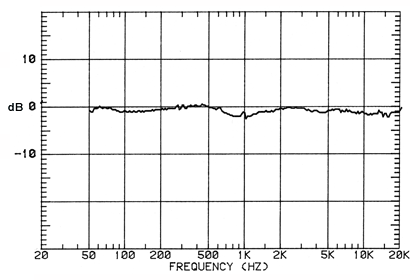Sound pressure level is really the ratio of the peak pressure to the partial vacuum between sound waves. To create those pressure fronts, you have to displace air. The more air you can displace at a given frequency, the louder the result.
The amount of air that a driver can displace involves three factors: excursion (how far it moves), area, and linearity. (Sensitivity is another feature--how far it moves at a given voltage, but low-sensitivity speakers can still play low and loud, they just need a bigger amp.) Linearity limits how high the frequency can be at a given excursion before the cone starts to get non-linear waves running through it (called "cone breakup").
Larger woofers are more subject to cone breakup at less-high frequencies, all else equal. But they never are equal--larger cones are designed to be stiffer, or they are crossed over at lower frequencies, which minimizes breakup (at least in a well-designed speaker).
When a driver runs out of excursion, the compliance pushes back on the motion, which has the effect of compressing the peaks. Or, the voice coil bangs against the back of the frame, which...is bad.
More area means the SPL requires less excursion, or the same excursion can move more air.
So, bigger drivers can play low frequencies louder, again all else equal. But, again, all else is not usually equal. My ancient Advents have 10" woofers (nominally) with a high excursion design, using soft foam surrounds. Advent controlled that motion by sealing the cabinet to damp the motion of the woofers. That makes them less efficient, but they have good bass extension and can play loud enough so that the mid-tweeter runs out of capability before the woofer does.
My new (to me) Revel Concerta F12's have 8" woofers, but it has two of them. Two 8" woofer nominally have 50% more area than one 10" woofer, so points to Revel. Revel also used a tuned port, which acoustically damps the speaker motion down to the port tuning frequency (where the woofer is almost standing still but the pressure waves are coming from the port), which is 33 Hz for those speakers. Below that, and the woofers start to run out of excursion, because they no longer have the port tuning to help control it. They make bass just as good as do the Advents, and they do it at (much) lower distortion. In fact, they make bass as well as two Advents at any given level of overall speaker performance (which on the Advents is mostly constrained by the mid-tweeter).
I specifically wanted the older F12's rather than their replacements which use 6" woofers, simply because I wanted the bass extension that benefits from area and excursion, and that low port tuning frequency. The smaller drivers require a higher port frequency to help keep the woofers from running out of excursion when playing too low and too loud. Small woofers run out at higher frequencies. The port frequency of my Pioneer bookshelf speakers, which have 4" woofers, is 72 Hz, and they don't make much bass below that.
TL;DR: It isn't just the size of the woofer, it's also the overall design of the speaker and the driver. But I think bigger (or more of them) is better if you want low and loud, unless you add a subwoofer to the system. Getting really good bass from small woofers is difficult. Most "affordable" new speakers are small because they target home-theater applications where they can count on the presence of a subwoofer. Even most speakers with 8" woofers will work less hard if a subwoofer is available, but I for one prefer not to use a subwoofer on a stereo for playing music. (And the subwoofer has to do more than the speaker--some small subs don't go any lower than these F12's.)
Rick "size isn't everything--but it's something" Denney

